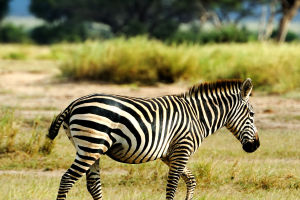White-Tailed Deer
Bambi, the famous Disney cartoon character, is a white-tailed deer. The white-tailed deer (Odocoileus virginianus) gets its name from the white fur on the underside of its tail, which it raises to give signs when it senses danger.
Quick Facts:
Scientific name: Odocoileus virginianus
Common names: white-tailed deer
Classification: Mammals
Size: 6-8 feet
Weight: 88-300 lbs
Overview:
White-tailed deer have a reddish-brown coat in spring and summer, which turns grayish-brown in fall and winter. They are easily identifiable by the white underside of their tails.
These deer have horizontally slit pupils and possess dichromatic vision, perceiving blue and yellow but having difficulty distinguishing between orange and red.
The size of white-tailed deer varies based on gender and habitat. On average, mature individuals measure 6 to 8 feet in length and stand about 2 to 4 feet tall at the shoulder.
Deer in cooler climates tend to be larger than those closer to the equator. Adult males, known as stags, weigh around 150 to 300 pounds, while adult females, referred to as hinds or does, range from 88 to 200 pounds.
Stags regrow their antlers each spring and shed them after the winter breeding season. Antler size and branching depend on factors such as age, nutrition, and genetics.
Habitat and Distribution:
White-tailed deer inhabit a range that spans from the Yukon Territory in Canada to the United States (excluding Hawaii and Alaska), Central America, and as far south as Brazil and Bolivia.
In the United States, black-tailed deer or mule deer have replaced white-tailed deer in the western regions beyond the Rocky Mountains.
In recent years, white-tailed deer have been able to expand their presence in Canada due to the impact of climate change.
These deer have also been introduced to Europe and the Caribbean, and are being raised in New Zealand. They have adapted to various habitats, including urban environments.
Diet:
While white-tailed deer can sometimes be seen during the day, they primarily feed before dawn and after dusk. Their diet consists of plants such as grasses, legumes, leaves, shoots, cacti, corn, fruits, and acorns.
Surprisingly, they can consume mushrooms and poison ivy without experiencing any ill effects. Deer are ruminants and possess a four-chambered stomach. When their diet changes, it takes time for the deer to develop the necessary gut microbes to digest new foods.
Therefore, feeding them foods that are not available in the wild can harm their health. Although white-tailed deer are primarily herbivorous, they are opportunistic predators that occasionally prey on mice and birds.


